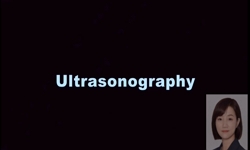Liver size is an important component in the diagnosis and follow-up of diffuse liver disease when testing for liver disease using ultrasonography. However, difficulties lies in determining the presence of hepatomegaly and liver atrophy because the met...
http://chineseinput.net/에서 pinyin(병음)방식으로 중국어를 변환할 수 있습니다.
변환된 중국어를 복사하여 사용하시면 됩니다.
- 中文 을 입력하시려면 zhongwen을 입력하시고 space를누르시면됩니다.
- 北京 을 입력하시려면 beijing을 입력하시고 space를 누르시면 됩니다.

초음파검사에 의한 간 크기 측정방법 및정상 성인의 체격지수별 참조범위 = Liver Size Measurement Method by Ultrasonography and Reference Range based on Normal Adult Physique Index
한글로보기https://www.riss.kr/link?id=A105160687
- 저자
- 발행기관
- 학술지명
- 권호사항
-
발행연도
2018
-
작성언어
-
-
주제어
초음파검사 ; 간 크기 측정 ; 체격지수 ; 간 종대 ; 간 위축 ; Ultrasonography ; Liver size measurement ; Physique Index ; Hepatomegaly ; Liver atrophy
-
KDC
510
-
등재정보
KCI등재
-
자료형태
학술저널
- 발행기관 URL
-
수록면
1-12(12쪽)
- DOI식별코드
- 제공처
-
0
상세조회 -
0
다운로드
부가정보
다국어 초록 (Multilingual Abstract)
Liver size is an important component in the diagnosis and follow-up of diffuse liver disease when testing for liver disease using ultrasonography. However, difficulties lies in determining the presence of hepatomegaly and liver atrophy because the method used for measuring liver size differs from one examiner to another and there is no relevant standard based on body build. The present study aims to propose a more objective method for liver size measurement and a reference range based on body build.
A total of 260 normal adults (130 males, 130 females) participated in the study. Ultrasonography was performed in all participants to measure the size of the right lobe, left lobe, quadrate lobe, and caudate lobe of liver. Based on Physique Index(PI), a value derived from multiplying weight(kg) by height(m 2 ), size of physique was divided into three groups including Group I with PI<150, Group II with 150≤PI≤250, and Group III with PI>250. Thus, mean liver size by PI and a reference range with 95% reliability were suggested.
The superoinferior diameter of right lobe was 12.34±1.18cm in males and 11.07±0.93cm in females, and its reference range was 10.64~11.0cm for Group I, 11.78~12.12cm for Group II, and 13.02~13.84cm for Group III. The anteroposterior diameter(T) of left lobe was 5.93±1.09cm in males and 5.18±0.99cm in females, and its reference range was 4.77~5.17cm for Group I, 5.49~5.79cm for Group II, and 6.68~7.44cm for Group III. The transverse diameter was 3.51±0.60cm in male participants and 3.42±0.49cm in female participants and its reference range was 3.29~3.51cm for Group I, 3.36~3.55cm for Group II, and 3.52~4.0cm for Group III. The caudate lobe index was 11.65±2.88cm 2 in males and 9.62±2.18cm 2 in females and its reference range was 8.83~9.75cm 2 for Group I, 10.62~11.47cm 2 for Group II, and 11.89~14.26cm 2 for Group III.
As a basic measurement method of liver size, the present study suggests measuring the superoinferior diameter for right liver lobe, the anteroposterior diameter for left liver lobe, the transverse diameter for quadrate lobe, and the caudate lobe index for caudate lobe. It is expected that this method along with its relevant reference range can be used as useful indicators in determining hepatomegaly and liver atrophy upon the diagnosis and follow-up testing of diffuse liver disease.
목차 (Table of Contents)
- Ⅰ. 서 론
- Ⅱ. 대상 및 방법
- Ⅲ. 결 과
- Ⅳ. 고 찰
- Ⅴ. 결 론
- Ⅰ. 서 론
- Ⅱ. 대상 및 방법
- Ⅲ. 결 과
- Ⅳ. 고 찰
- Ⅴ. 결 론
동일학술지(권/호) 다른 논문
-
- 대한방사선과학회(구 대한방사선기술학회)
- 김동진(Dong-Jin Kim)
- 2018
- KCI등재
-
디지털 흉부 후·전 방향 방사선영상을 이용한 정상 한국인 폐 크기의 영상의학적 계측
- 대한방사선과학회(구 대한방사선기술학회)
- 박여진(Park Yeo-Jin)
- 2018
- KCI등재
-
유방전용감마카메라에서 유방 보형물이 영상에 미치는 영향에 관한 고찰
- 대한방사선과학회(구 대한방사선기술학회)
- 이주영(Juyoung Lee)
- 2018
- KCI등재
-
소프트웨어 기반 정도관리 시스템을 이용한 부피세기조절회전치료 환자 별 정도관리의 유용성 평가
- 대한방사선과학회(구 대한방사선기술학회)
- 강동진(Dong-Jin Kang)
- 2018
- KCI등재




 ScienceON
ScienceON 스콜라
스콜라


